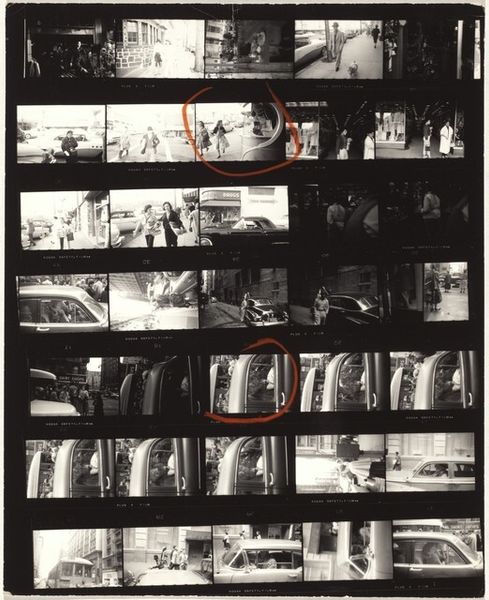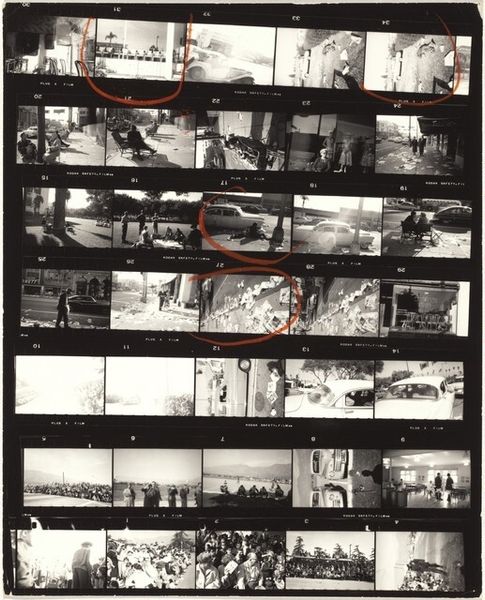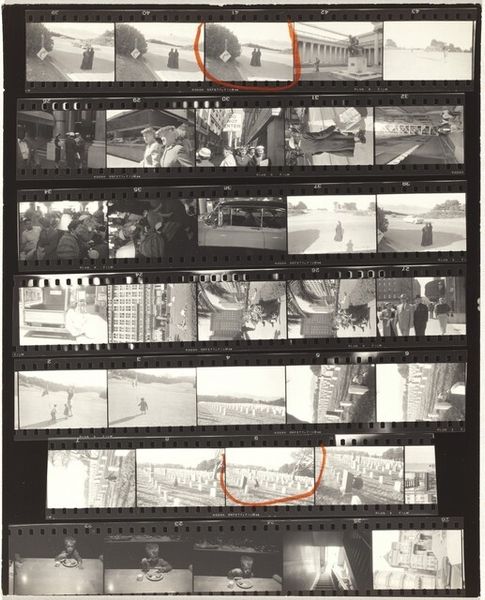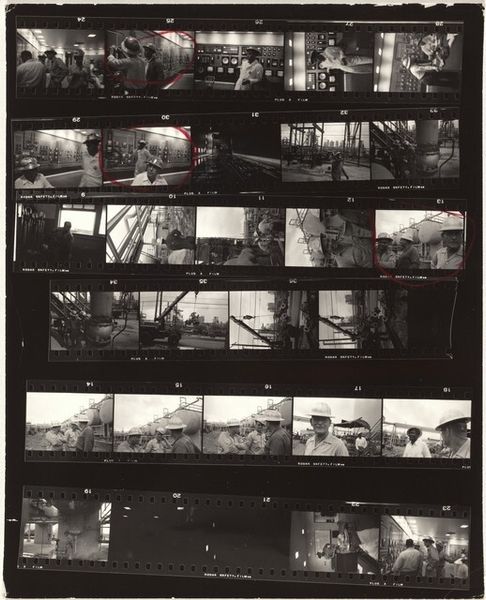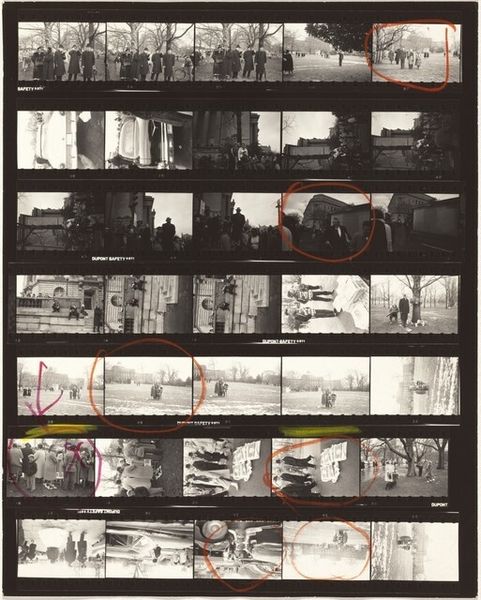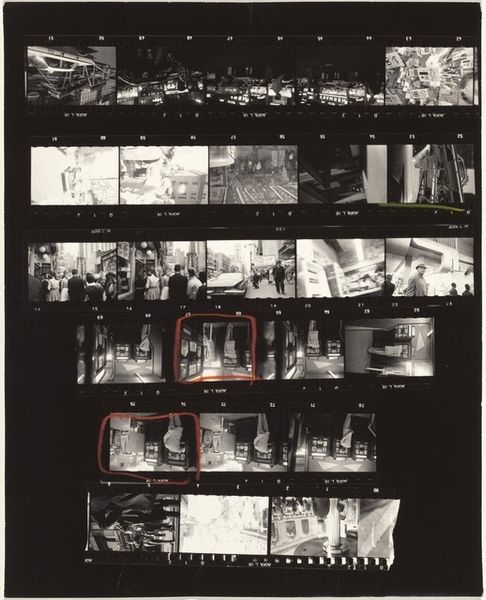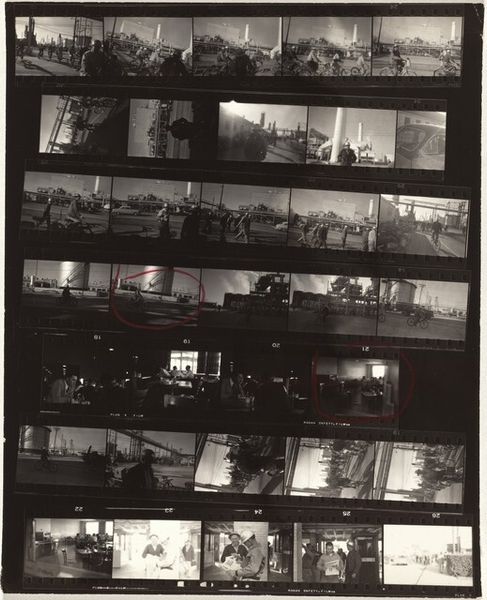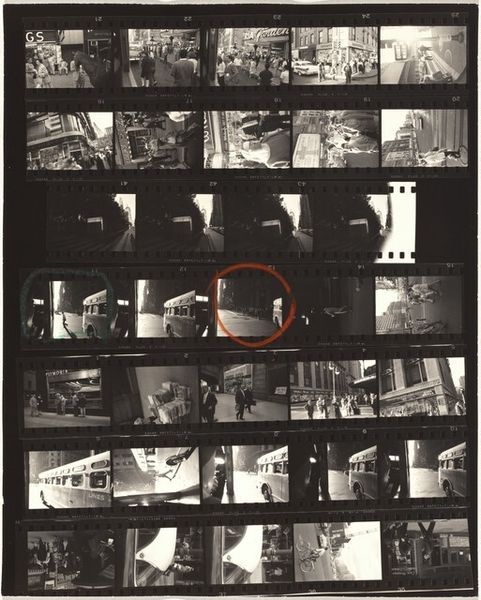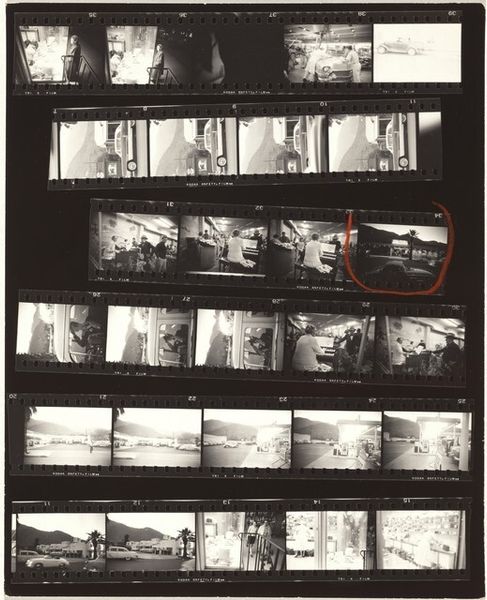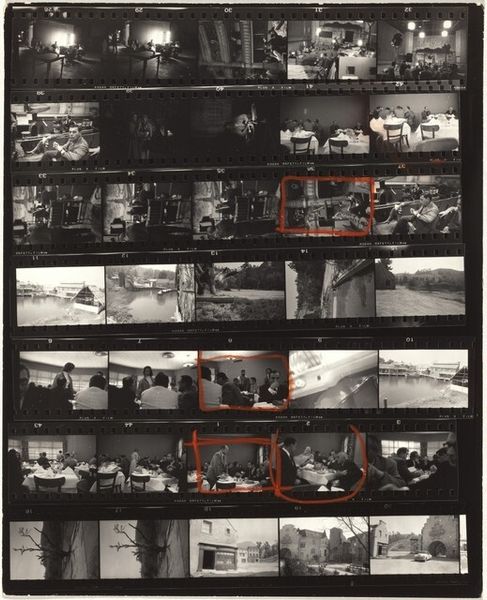
Dimensions: overall: 25.2 x 20.2 cm (9 15/16 x 7 15/16 in.)
Copyright: National Gallery of Art: CC0 1.0
Editor: Robert Frank’s “From the Bus 66,” a gelatin-silver print from 1958, feels like a captured memory strip. There's a disorienting effect in seeing so many fleeting images together. What stands out to you in this compilation? Curator: I see the enduring power of visual fragments. Each frame is like a syllable in a larger visual poem, evoking a sense of journey. Street photography can encapsulate and then communicate more than merely documenting facts. The sequencing suggests a cultural memory – what does this tell us, emotionally, about mid-century America through Frank’s lens? How might these seemingly random moments, juxtaposed, begin to hint at the cultural memory being shaped at the time? Editor: It's interesting how these disconnected frames can suggest a bigger picture. Does the lack of a clear narrative say something about the nature of memory itself? Curator: Absolutely. Memory isn’t a linear narrative, but a mosaic. Each image is a signifier; a reflection of social tension and emerging realities. Note how Frank, an outsider, uses light and shadow to create not just an image, but an atmosphere. He isn't just recording reality; he is interpreting it. What impression does this selection of seemingly random events make on you now? Editor: I suppose it reveals the chaotic, unedited nature of everyday life that, collectively, forms our perception of an era. The mundane can be profound. I'll definitely look at Frank's other work to see what patterns emerge. Curator: Precisely! This approach asks us to reconsider how we perceive the past and the stories that images, especially photographic ones, tell over time. Consider how other works explore similar veins.
Comments
No comments
Be the first to comment and join the conversation on the ultimate creative platform.

